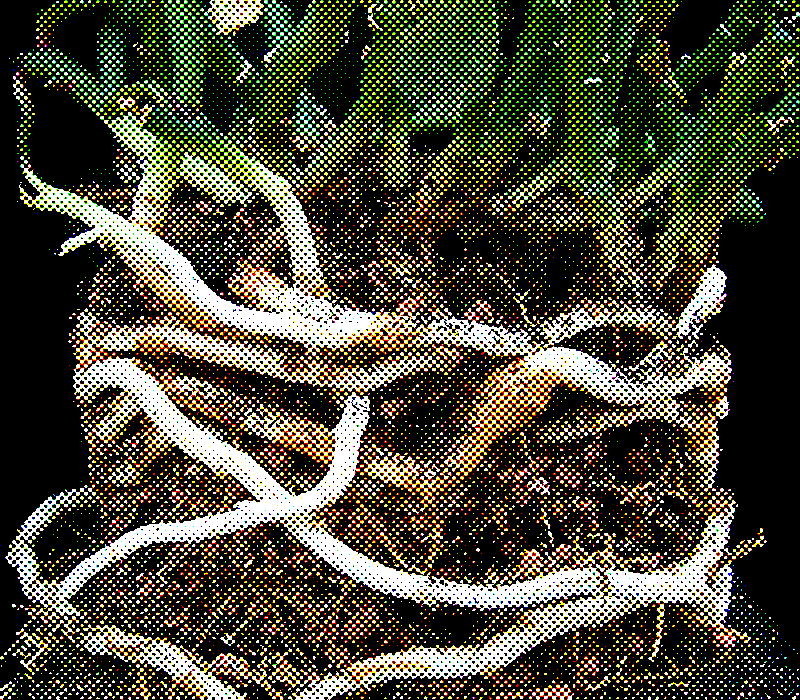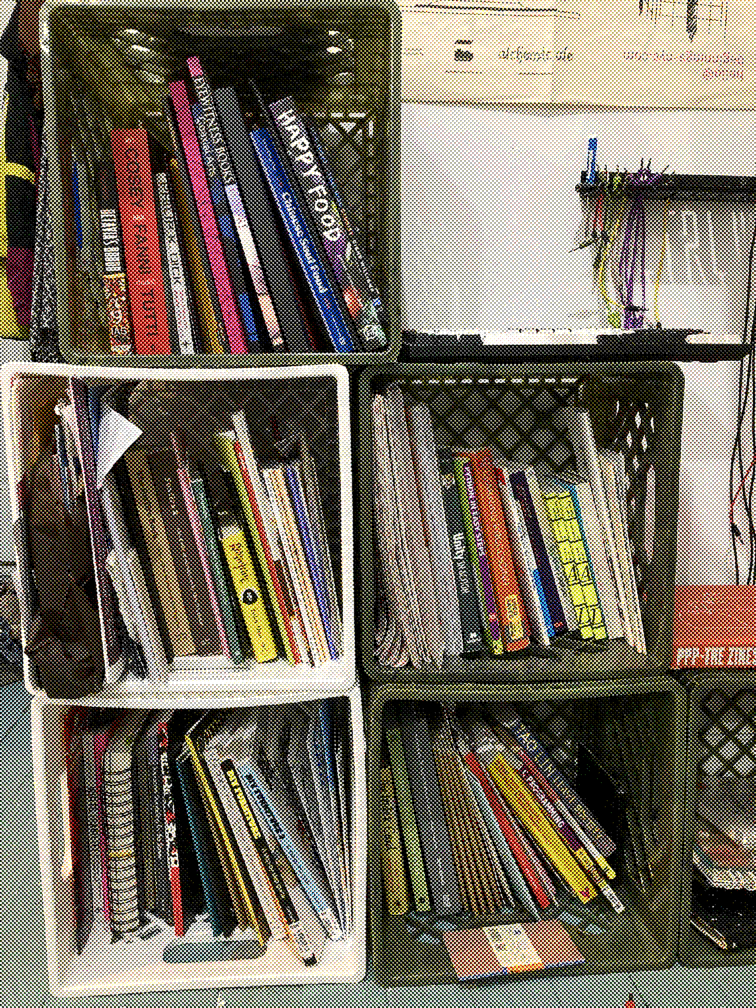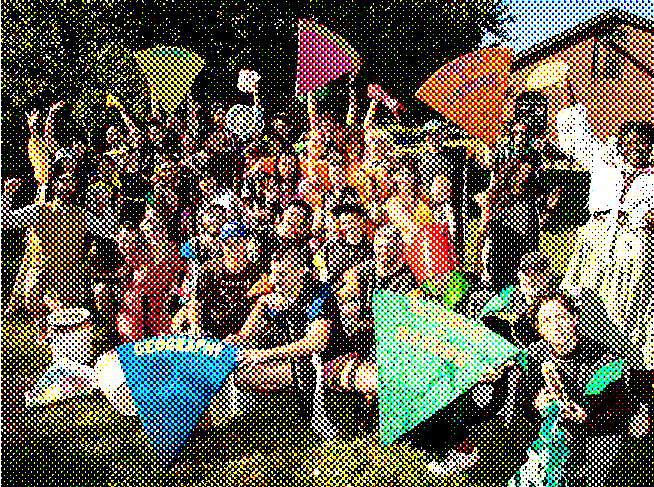
2021-09-26
There are many ways to think about non-hierarchical organizing models. Anarchism in particular is often incorrectly challenged as an ideal without working models. This is largely done not out of malice but a failure of imagination or ability to look for alternatives to one's own locus of knowledge. This isn't intended to be a broad essay on the political system of anarchist organizing writ large or an overview of the numerous working models of anarchist societies. There are many of these elsewehere. I particularly recommend Chomsky's On Anarchism and James Scott's Two Cheers for Anarchism as beginner-friendly sources in general as well as reading about the current territories of Rojava and Chiapas. Rather, this is a tiny post on three rhizomatic organizing systems in my own life that are anarchist in nature.

Rhizome: A plant stem that grows horizontally under or along the ground and sends out roots below and shoots above in a reproductive system with new plants developing from the (off)shoots.
1. Milk crate libraries
In the past 15 years I've moved at least 8 times to different apartments or houses, not counting the times travelling for extended periods. I'm not proud of this fact but it's a reflection of precarity, job opportunity, and rising rents in expensive cities. The only possessions I've had consistently throughout this entire time are my books, a constantly evolving collection. For this entire time, my books have been housed in milk crates, both the scavenged and stolen kind, the imitation Ikea/Container Store variety, and now I also own 4 'designer' milk crates with marbling patterning that I bought on the internet (not proud of this, but it was during peak Covid and I excused myself this extravagance.). When moving from California to the east coast I packed my milk crates into my van, drove up the coast, dropped off a few dozen books for resale at a public library sale fundraiser. The rest were packed into my cousin's garage in northern california and some were shipped to my parent's place, and I sold my van and used the money to buy my flight tickets to begin my extended round the world travel. After travelling I collected these crates and the entire collection came together again.

Even now as a fulltime employed worker I can afford a more 'fine' designer book shelving, but I love my milkcrates. The milk crates are an ideal rhizomatic modular library. Currently I have 7 milkcrates in my apartment and maybe 20 or so in my office. What i love about this method is its useable, expandable nature. New parts (shelving) can be added easily. The sum is made up of the separate parts, and you can easly see these parts, yet the sum feels like a complete whole as well. If needed, at the end of semester, or after moving, the parts can be separated, easily moved, reassembled or dissembled back into separate collections. When moving apartments, the crates themselves are the packing material. Over time as I want to change organizing methods or rearrange my interior I can easily do so. A box of zines can be easily brought to a picnic, infoshop, class or merch table. And the disparate colors (garbled green, white, black, gray) combine in aesthetically pleasing palettes no matter the combination.
2. Skateboarding
I've been biking my entire life, but I'm mostly an amateur and late-in-life skateboarder. I'd hardly call myself a 'good' skater but I can skate enough to get around, and I like doing it. An associate of the Universal Research Group Brandon Avery Joyce cites skateboarding as an ideal organizing model. One skateboards alone, or meets up with friends to form a temporary group, breaking down into sub-groups when heading off to different neigborhoods to get home for example. 'Meetings' happen in alleyways, behind shipping warehouses, parking lots and the like. Alignments are constantly remade. Skate styles and communities are multi-varied. Despite successful attempts at co-optation (Nike, the Olympics) it still exists largely unsanctioned and in the fringe of most comumnities, literally on the edge and excess of capitalism. To get started requires about $20 - 70. Skateboarding literally re-imagines our city streets, re-making the architecture to our own fantasies and needs. There is no institution or big skateboarding. We melt back into society, grinding concrete back into the shadows.
3. Artist collectives
I've written previously about my experiences being part of various art collectives. These are pre-figurative groups and spaces, creating and living the model of the world that we want to see exist beyond our own community. Largely enacted in small intentional communities, these groups feel to me like they are dealing within a small community with the larger issues that I want to reckon with in my life: what makes a meaningful life? how do I want to relate to and join with other people? what can we do together? when do I need to go my own way?

This kind of activity can often feel like it revolves around lots of meetings: planning, check-ins. There's little or no money to be made in many of these activities, and so the work grows out of our inner core emotions. Things can get hairy in a way that many people only ever experience (I think) that deeply with other family members. But for many of us, these communities are founded and created intentional communities specifically to find common support and meaning. With rotating leadership in a few examples or leaderless decision-making it's one of the few more formally-organized group that feels like an appropriate group organizing model.
Located in warehouses, basements, apartments, these places come and go. New people come in and out. Extended families grow. They are sites for exhibits, concerts, meals, creation, distribution of materials and food and zines. The rise of the internet has affected how these groups organize, but perhaps much less than you might think. And it hasn't supplanted or eliminated the need for them.
Thrasher: Fancy Lad's "Is This Skateboarding?" video (Youtube skateboarding video)
JENKEM: Matt Tomasello in "Rodney Mullen on Bath Salts: Round Three (Youtube skateboarding video)
Being part of an art collective
---You can leave a comment by emailing lettuce at the current domain.